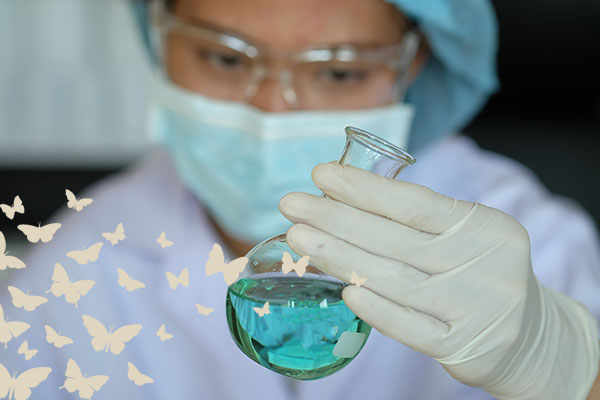ABOUT LUPUS

OVERVIEW
- Lupus is a chronic, complex and prevalent autoimmune disease that affects more than 20 000 Australians.
- Lupus is difficult to diagnose because its symptoms are wide-ranging, can come and go, often mimic those of other diseases, plus there is no single laboratory test that can definitively identify that someone has lupus.
- Early detection and treatment is the key to a better health outcome and can usually lessen the progression and severity of the disease.


- Lupus affects mainly women
- Lupus is one of Australia’s least recognized major diseases. While lupus is widespread, awareness and accurate knowledge about it is lacking.
- More than 90 % of lupus sufferers are women, mostly young women who are generally diagnosed between the ages of 15 to 45.
- Women of a non-Caucasian background are two to three times more at risk for lupus than Caucasians.
SERIOUS CONSEQUENCES of Lupus
In lupus, the immune system, which is designed to protect against infection, creates antibodies that attack the body’s own tissues and organs.
It can affect any organ or system “head to toe” in the body, including the kidneys, brain, heart, lungs, blood, skin, and joints.
Lupus is a leading cause of premature cardiovascular disease, kidney disease and stroke among young women.
FOUR TYPES of Lupus
Although “lupus” is used as a broad term, there are four different types of lupus:
- systemic lupus erythematosus (SLE);
- discoid or cutaneous lupus affecting only the skin;
- drug-induced lupus triggered by certain prescription medications;
- neonatal lupus which can affect
new born babies whose mother carriesa specific lupus related antibody.
Systemic lupus erythematosus (SLE) is the form of the disease that most people refer to when they say “lupus.” The word “systemic” means the disease can affect many parts of the body — including the kidneys, brain or central nervous system, blood and blood vessels, skin, lungs, heart and joints. Skin involvement occurs in up to 80% of patients.

UNDER AND MIS-DIAGNOSED
Lupus is difficult to diagnose. No single test can definitively determine whether a person has lupus — but several laboratory tests of blood and urine along with clinical assessment can help make a diagnosis.
Signs and symptoms that suggest systemic lupus include:
- Painful or swollen joints
- Fingertips and/or toes become pale or purple from the cold or stress
- Sores in the mouth or nose
- Low blood count
- Red rash or color change on the face, across the cheek or bridge of nose
- Unexplained fever for several days
- Chest pain associated with breathing
- Protein in the urine
- Extreme fatigue — feeling tired all the time
- Sensitivity to the sun
- Depression, trouble thinking, and/or memory problems
- Unusual hair loss, mainly on the scalp

ELEVEN DIAGNOSTIC CRITERIA
The American College of Rheumatology identified 11 criteria for classifying a possible lupus diagnosis. The presence of at least four of these potentially points to a lupus diagnosis. These criteria are:
- Malar ( Butterfly rash on the face)
- Discoid rash
- Photosensitivity
- Oral and nasal ulcers
- Non-erosive arthritis
- Pleuritic or pericarditis
- Renal disorder
- Neurologic disorder
- Hematologic disorder
- Immunologic disorder; and
- Positive antinuclear antibody
A full explanation of these eleven criteria is available
DIFFICULT TO TREAT
- Lupus is usually treated by an immunologist or a rheumatologist who specialises in treating diseases that affect the joints, muscles and bones.
- Specific manifestations of lupus, such as heart and kidney disease, may be co-treated by other types of physicians specialising in that field.
- Since lupus is highly individualized, and no two cases are exactly alike, the treatment also varies depending on the specific symptoms and needs of the patient.
- Anti-inflammatory drugs, anti-malarials and steroids, such as prednisone, are used to treat lupus. Cytotoxic chemotherapies similar to those given in the treatment of cancer are also used to suppress the immune system in lupus patients.
REASON TO HOPE
While there is no known root causes or cure, the progress of recent discoveries and treatments currently in development is encouraging.
(References: Adapted from www.lupusresearchinstitute.org/lupus-facts/lupus-fact-sheet)


